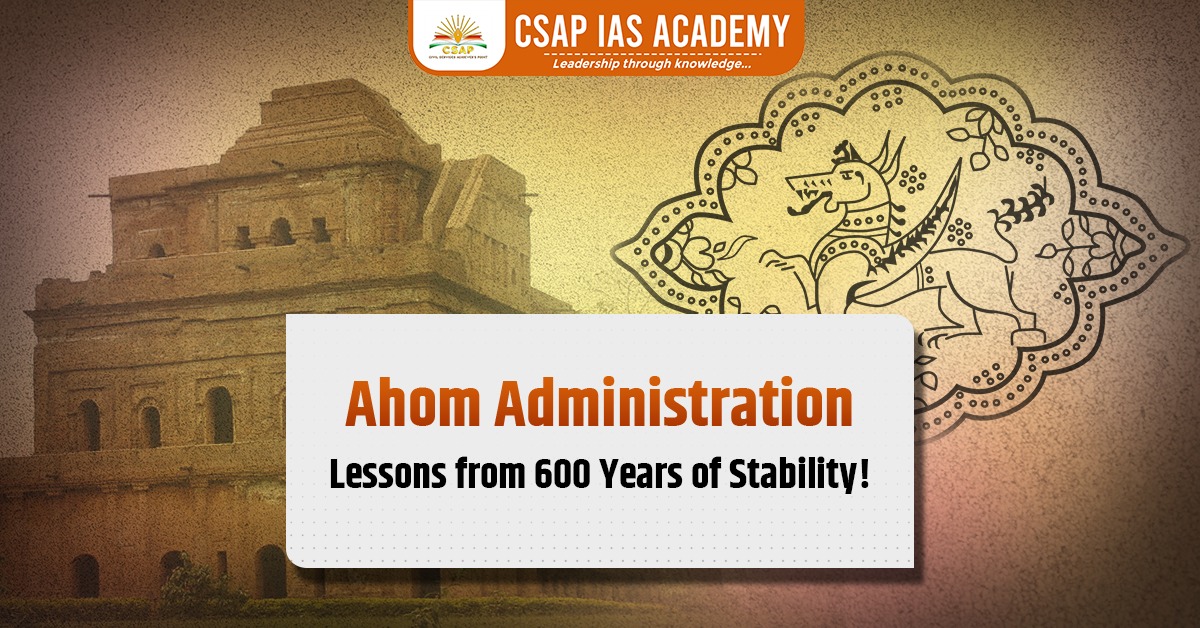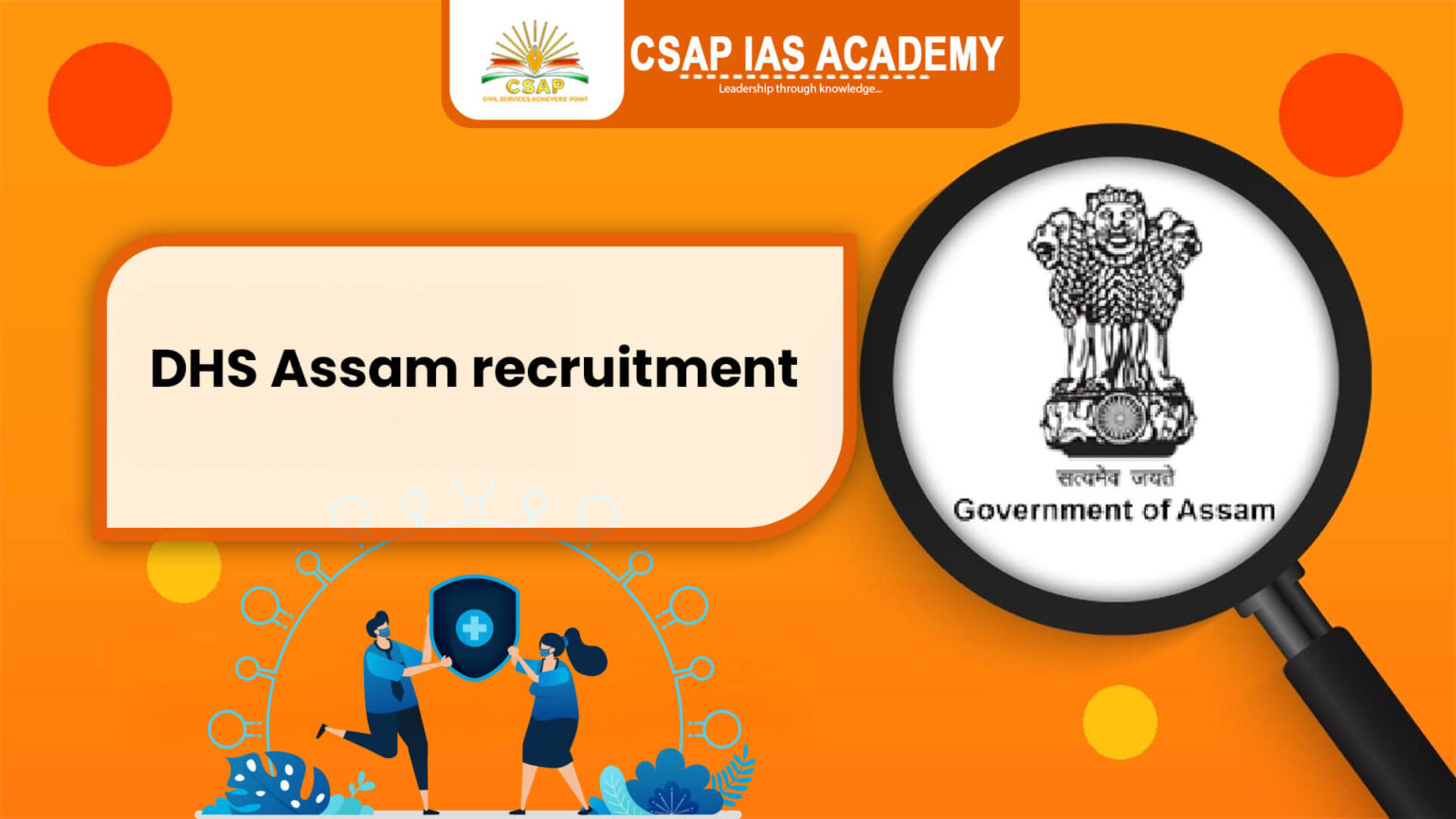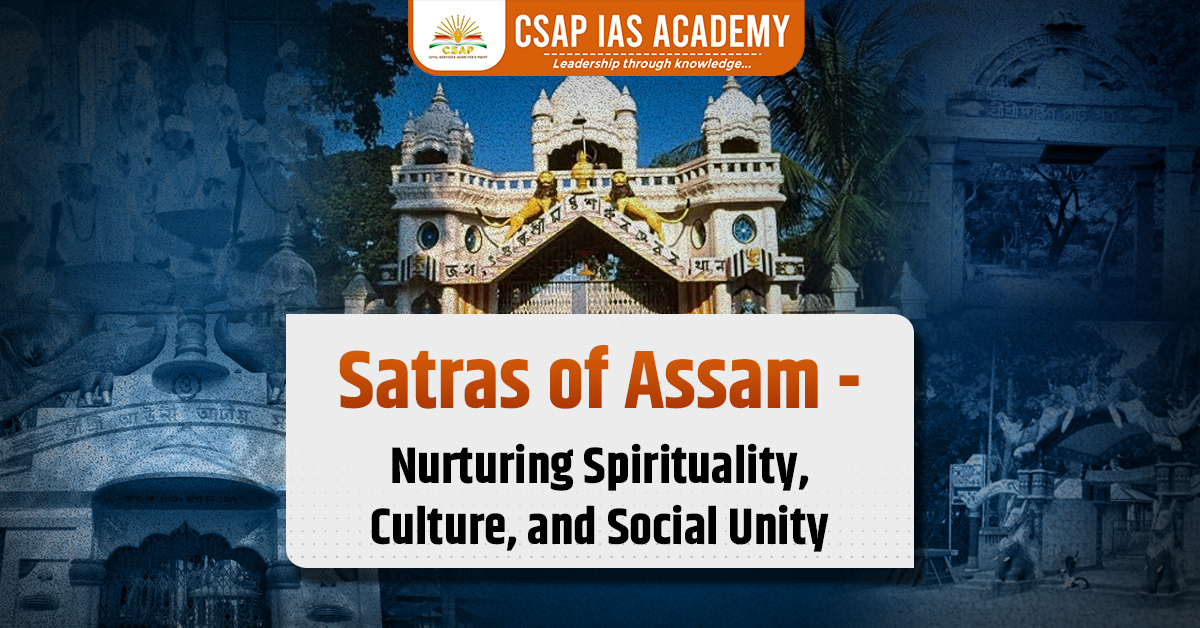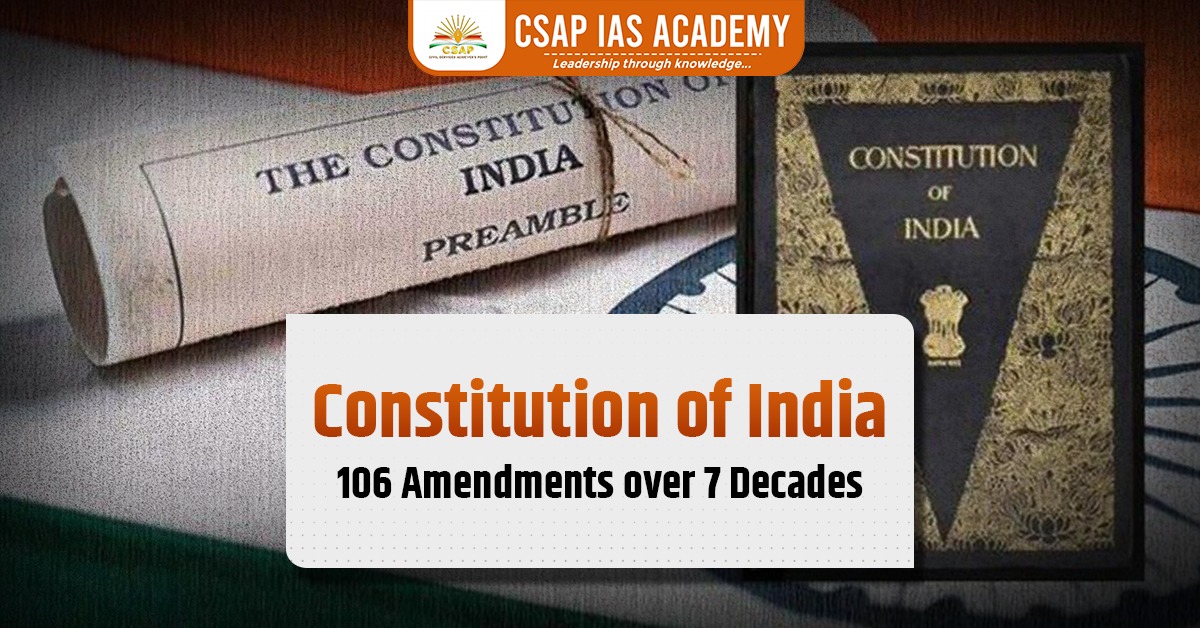The Ahom administration played a crucial role in sustaining their 600-year-long rule in Assam, making it one of the most resilient dynasties in Indian history. The unique administrative structure, including a well-organized monarchy, an efficient Council of Ministers, the famed Paik system, and a robust military strategy, allowed the Ahoms to maintain stability and resist external invasions, including repeated Mughal attempts.
In this blog, we will explore the various aspects of Ahom administration, from the role of the Swargadeo (king) to the intricate revenue and military systems. Understanding this system is essential for aspirants preparing for APSC and other state government exams, as it forms a significant part of Assam’s history and governance.
Important Aspects of the Ahom Administration
The essence of 600 years of rule of the Ahoms was their system of administration which had several peculiar characteristics that enabled the Ahoms to rule such a long period of time. We may classify the Ahom administration of government in several heads. Following are the some important aspects:
The King
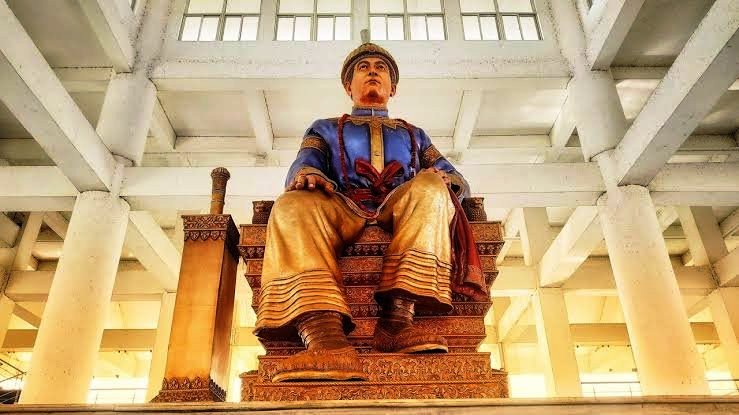
The Ahom king is called chao pha, swargodeu being an Assamese equivalent. Here chao is given the meaning of king and pha that of heaven together meaning heavenly king. The Ahom government was basically monarchic though at times the Officials overshadowed the personality of a king.
The king was the source of all power, the fountain head of justice, but he had to abide by the recommendations of the Council of Ministers. The right of succession was generally hereditary on the male line. But in case of absence of a legal claimant, the throne was offered to the king’s brother or his nearest relative.
Rudra Singha violated the traditional right of succession by his deathbed injunction that after him all his sons should rule the country one after another. The Ahom kingdom was ruled by a king who had to be a descendant of the first king Sukaphaa.
Succession was generally by primogeniture but occasionally the great Gohains (Dangarias) could elect another descendant of Sukaphaa from a different line or even deposes an enthroned one.The main duty of the king was the protection of his people and another function of the king was to conduct foreign policy.
The king’s coronation ceremony is held with pomp and show in Charaideo and this ceremony is called singarigharutha. Singarigharutha was the coronation ceremony of Ahom Kings. Swargadeo Sudangpha or Bamuni Raja introduced this system in 1397. It was only performed in Charaideo, the first Capital of Ahom Kingdom established by Sukapha. Singarigharutha or Ascending of Singarighar was a grand
ceremony.
It was believed that a king could attain the status of a real monarch only after performing the Singarigharutha ceremony. But due to involvement of huge expenses, many Ahom Kings avoided the ceremony.
One of the key features of the ceremony was the ascending of Singarighar by the king. The Singarighar was a platform made of Singari tree. Thus the ceremony got the name Singarigharutha.
King Rudra Singha ended the practice of sacrificing a human being during Singarigharutha ceremony. Instead he sacrificed a buffalo. Future Kings also followed his practice.
Council of Ministers
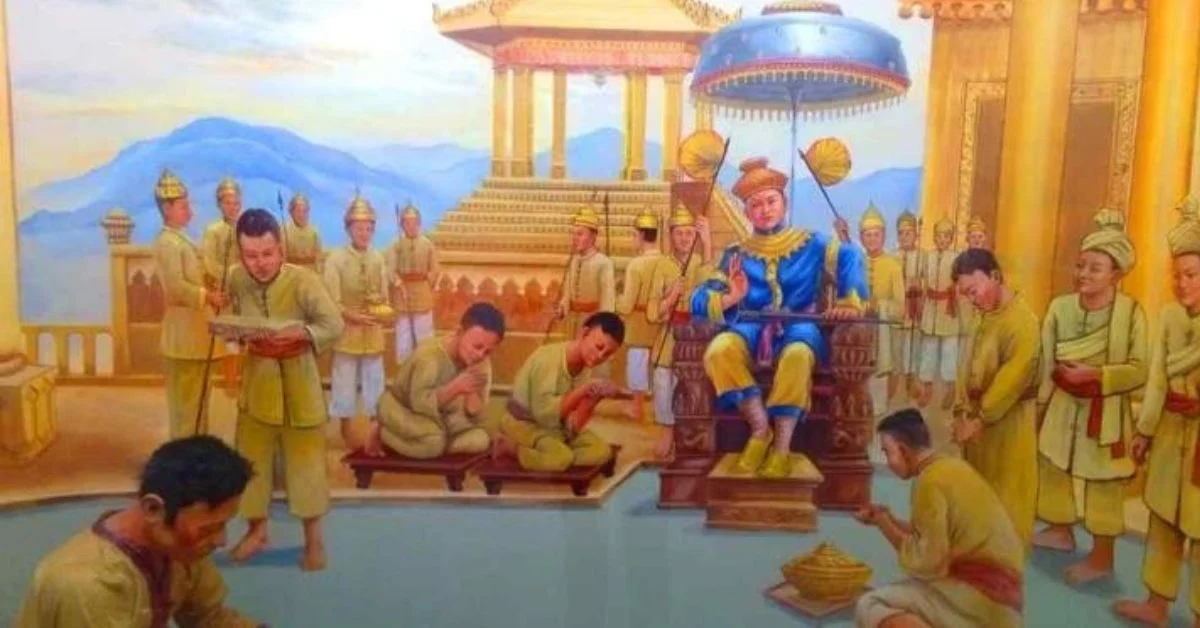
Sukaphaa had two great Gohains to aid him in admininstration: the Burhagohain and the Borgohain. In the 1280s, they were given independent territories and they were sovereigns in their given territories called bilat or rajya. The Burhagohain’s territory was between Sadiya and Gerelua River in the north bank of the Brahmaputra and the Borgohain’s territory was to the west up to the Burai River. They were given total command over the paiks that they controlled.
These positions were generally filled from specific families. Princes who were eligible for the position of Swargadeo were not considered for these positions. In the 16th century Suhungmung added a third Gohain, the Borpatrogohain. The Borpatrogohain’s territory was located between the territories of the other two Gohains.
Pratap Singha added two offices, Borbarua and Borphukan who were directly under the control of the king. The Borbarua, who acted as the military as well as the judicial head, was in command of the region east of Kaliabor. He could use only a section of the paiks at his command for his personal use and the rest rendering service to the Ahom state.
The Borphukan was in military and civil command over the region west of Kaliabor, and acted as the Swargadeo’s viceroy in the west. The Council of Ministers or patramantri consisted of five great ministers the Borgohain, the Burhagohain, the Barpatrogohain, and the Barbarua and the Barphukan appointed by the king. They were individually responsible to the King. They had no collective responsibility in the modern parliamentary sense but they discussed matters of policy and of day to day administration collectively in the King’s Council Chamber.
Of these counsellors the Barphukan lived in his distant headquarters in Lower Assam. The Barphukan had an immense responsibility, of defending the kingdom by guarding the main gateway of Gauhati on the invasion route from Mughul India. He had in his court six phukans to aid and advise him in efficient discharge of his functions and they were the Paniphukan, the Deka phukan, the Neogphukan and the two Chetiaphukans. The Barbarua who had equal status with the Barphukan had to be always present at the royal court because he was the Chief Secretary, Chief Revenue Officer, and the head of the judiciary.
All appeals from lower Courts lay to him. For all cases, other than those which could be decided by the King alone, there was a judge called the Nyaysodha Phukan (Phu-kan-Phu-shanngin) who was supposed to be a legal expert.
The Barbarua‘s jurisdiction extended to all the territories to the east of Kaliabar except the provinces under the Great Gohains. He was also endowed with an estate. He commanded 14,000 paiks. The three Great Gohains had equal status. One of them was appointed as Rajmantri. On all occasions their concurrence regarding important affairs was indispensable. They proclaimed the Monarch and could depose him in the event of incapacity or great delinquency. In the provinces allotted to each, they exercised most of the independent rights of sovereignty.
In case of the Gohains the succession was usually hereditary except when the son of a Gohain was incapacitated by lack ability or any other cause. The Great Council was summoned when its advice and consent were deemed necessary on a big issue, such as war and peace or selection of a new king on the failure of the regular line or any disorder and insurrection in the country. The offices of Tipam, Chaing and Namrupia Rajas were not hereditary, but were conferred upon the reigning king‘s heirs and near relatives. These Rajas exercised the same powers as the Great Gohains as they relieved the King of less important duties, and assisted him in conducting affairs of State.
In Upper Assam there were no vassal chiefs, but with the annexation of Darrang and Kamrup, the Rajas and Zamindars particularly the Raja of Darrang. Rani Raja, Luki Duar Raja, Beltala Raja, Dimarua Raja and Gobha Raja paid revenue and furnished their quotas of men for service. They administered justice within their respective territories.
Paik System (Khel System)
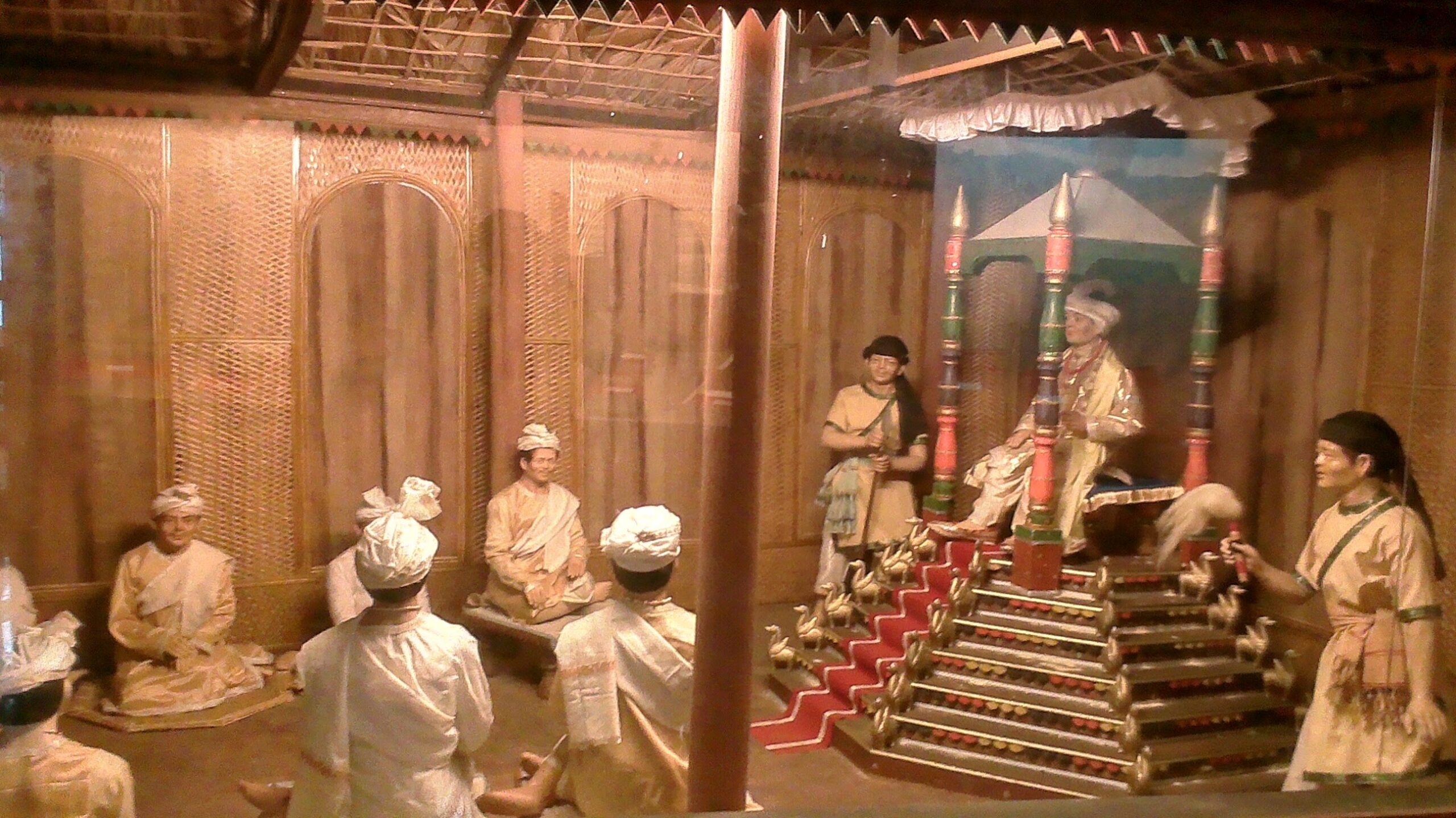
The organization of society during Ahom administration known as the paik or khel system grew out of a relation which the Ahoms established with the tribes of the south eastern part of the Brahmaputra valley. Sukapha introduced the system of exacting personal service from the members of the tribal communities who were to serve the ruling tribe as fuel suppliers, water drawers, honey suppliers etc.
But the paik system was systematically implemented by Momai Tamuli Barbarua under the patronage of Pratap Singha. Under the Khel or Paik system, every adult male between the ages 16 to 50 was registered as a paik for State service.
Four paiks (later three) formed a unit called got. The paiks in a got had to render service to the State in rotation, one paik serving for a period of three (later four) months a year. The cultivation or domestic concerns of the paik on duty was looked after by his comrades in a got.
In times of emergency two, sometimes three, paiks were recruited from each got, the first levy in a got was called the mul, the second, the dewal and the third, the tewal. Some paiks were also organized into professional khels, each rendering a particular kind of productive work like boatbuilding and arrowmaking for the State.
The control of the state on the paiks were very rigid over each 20 paiks there was an officer called Bora, over 100 paiks there was an Saikia and the Hazarika commanding over 1000 paiks and phukan commanding over 6000 paiks.
Military System
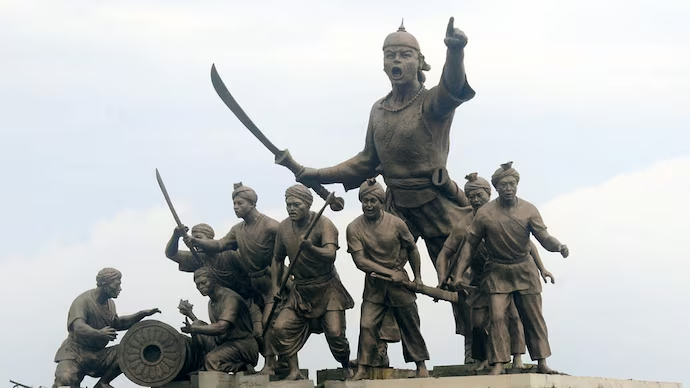
The Ahoms who made their humble beginning as under Sukapha attained high watermark due to military strategy. In the early days, the king entirely depended on the three Gohains for success in war. The Ahom army mainly consisted of infantry and elephants. Moreover, the paiks constituted a standing militia which could be mobilized by the kheldar in times of war. In war strategy open encounters were supplemented by guerilla warfare.
Moreover, the Ahoms had an efficient navy and abled espionage system through which king could eye on important matters of the states.
Law and Justice

In civil matters Hindu laws expounded by the Brahmans have been generally followed during the later days. The criminal law was characterized by sternness and comparative harshness. The chief judicial authorities were Barbarua and the the Barphukan in their respective provinces and trials were conducted before them.
Revenue Administration
According to the laws of the country, the land and the subjects were equally the property of the State. In upper Assam paik system were enforced and hence no one need to pay the land revenue in cash. In kamrup, Chandrakanta Singha introduced a tax on lands called Kharikatana. Moreover revenue administration of Kamrup was different from that of eastern Assam where the Muhammadans retained the same system of revenue as found in Bengal.
For fiscal purpose the districts were divided into parganas which were in charge of Choudhury. Further parganas were divided into Taluk in charge of a Talukdar. The lands granted by the Ahoms rajas can be classified under several heads such as Debottor land were for the maintenance of the temple, Brahmottor land for the brahmans and Dharmottor lands for religious and charitable purposes.
Conclusion
The main reason behind the long rule of 600 years in Assam of the Ahoms lies behind their system of government. Every characteristics of the Ahom system of government enabled the king to maintain law and order in proper way.
On the strength of the system of government, military strategy and efficiency of the army, the Assamese earned the credit as one of the few races in India, who could stem the tide of Mughal conquest. Ahoms also maintained cordial relations with the neighbouring hill tribes. For instance, roads were constructed for communication with the hills; open markets were organized for the growth of border trade and friendship between the hills and the plains people.
Although during the later days of the Ahom rule, they did not pose effective threat towards Burmese invasion and became under the control of the British. But it was not due to the drawbacks of the system of government but due to the conspiracies among the Royal Officers which gradually weakened the Ahom kingdom and thus lost their own glory.
Read: 100 years of Quantum Science
Download CSAP IAS Academy App:

